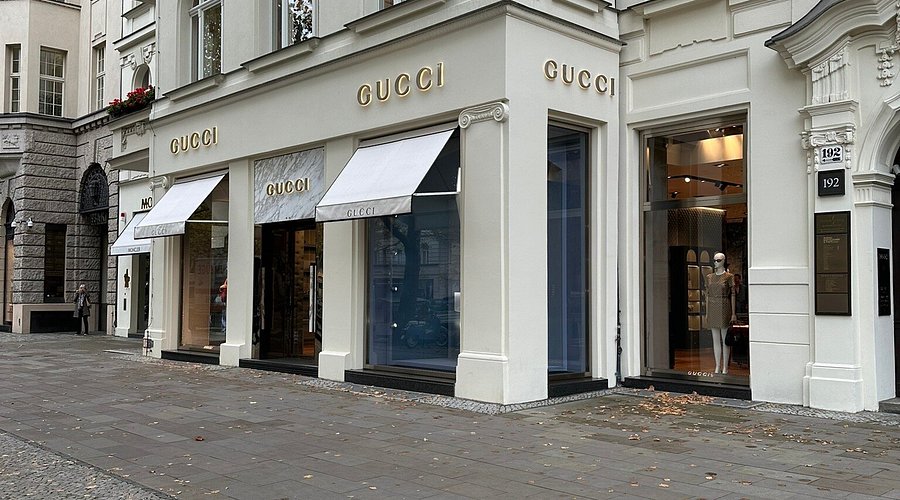Collectors Shift from Fine Art to Rare Gene Edited Flora as Status Symbols
By
Sophie Moore
Last updated:
September 22, 2025
First Published:
September 22, 2025

Photo: Barchart.com
For centuries, fine art, jewelry, and rare wines have defined what it means to be a collector of status. Today, however, a new chapter is unfolding in the world of luxury where wealth is being expressed through living creations rather than static possessions. Gene edited flora is quickly emerging as the latest symbol of prestige for the wealthy elite.
From paintings to living masterpieces
Unlike paintings that hang on walls or sculptures that sit motionless in curated rooms, these botanical works are alive and evolving. Wealthy patrons are commissioning scientists and biotechnologists to design plants with colors, shapes, and growth patterns never before seen in nature. These creations are not merely decorative but are considered living masterpieces that combine art, science, and status in one form.
The science behind the beauty
At the heart of this movement lies CRISPR technology and advanced gene editing tools that allow precise alterations of plant DNA. By controlling pigment, size, and even fragrance, scientists are able to create flora that seems almost otherworldly. Some blossoms glow faintly at night while others shift shades depending on temperature or light exposure. For collectors, the marvel lies not only in beauty but in owning something impossible to replicate without specialized knowledge and access.
Why the wealthy are embracing flora
The appeal is both aesthetic and symbolic. In a world where art collections and luxury cars are becoming common among the rich, ownership of a rare living organism feels both futuristic and deeply personal. Unlike art that gathers dust, gene edited flora requires care and becomes a conversation between owner and creation. This intimacy elevates the sense of exclusivity and offers a new way for wealth to interact with nature.
The rise of botanical galleries
Just as private galleries house famous paintings, affluent households are now building controlled environments to display their botanical treasures. Climate regulated glass structures filled with vibrant, custom grown plants are being designed as part of luxury estates. Some collectors even host private viewings where guests are invited to witness blossoms that exist nowhere else on Earth.
A fusion of art and science communities
This trend has given rise to an unexpected collaboration between the scientific and artistic elite. Biotechnologists are being courted by wealthy families to design custom commissions while artists are partnering with labs to create flora that blurs the line between genetic research and aesthetic innovation. The fusion of these two worlds is producing not only plants but also a new cultural dialogue around creativity.
The economics of exclusivity
The cost of commissioning a single gene edited plant can reach into millions, depending on its complexity and rarity. Ownership is often documented through private agreements that certify the uniqueness of each creation. Just as with fine art, resale markets are beginning to emerge, with auction houses considering dedicated categories for living masterpieces.
Controversy surrounding ownership of life
Despite its allure, the movement has not escaped criticism. Ethical debates are intensifying over the manipulation of nature for the sake of luxury. Questions are being raised about whether wealth should dictate access to such innovations and whether altering life forms for vanity undermines the natural order. Yet for the ultra wealthy, controversy often fuels desirability, making the plants even more sought after.
Status in a shifting cultural landscape
What makes this shift significant is not only the novelty of the plants themselves but the way it reflects broader cultural change. Wealthy collectors no longer find satisfaction in static objects that only suggest value. They want possessions that evolve, respond, and embody the future of human creativity. Rare flora becomes not only a possession but a living narrative of power and innovation.
Looking toward the future of collections
As technology advances, the future of luxury collecting may move even further into the realm of living design. Predictions already point toward private gardens filled with flora that purify air in unique ways, or plants capable of changing architecture by growing into structured forms. For the wealthy, this represents a new frontier where luxury does not sit still but grows, blooms, and breathes as a reflection of human imagination.
Subscribe to unlock premium content
Sed at tellus, pharetra lacus, aenean risus non nisl ultricies commodo diam aliquet arcu enim eu leo porttitor habitasse adipiscing porttitor varius ultricies facilisis viverra lacus neque.
A comprehensive guide on Agile development

10 Productivity tools that are worth checking out

Top 7 Must have management tools for productivity

A comprehensive guide on Agile development

10 Productivity tools that are worth checking out

A comprehensive guide on Agile development








.png)
